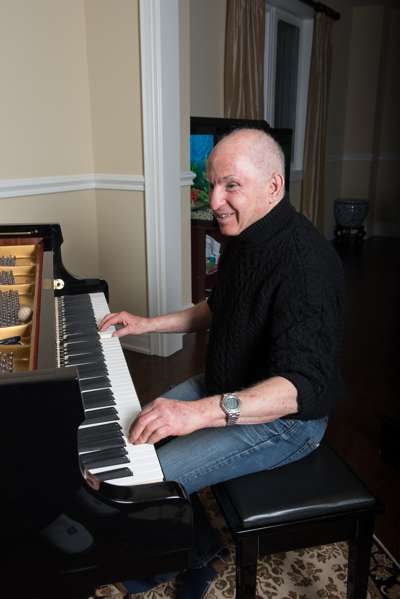Piano Rebuilding, Voicing & Tuning
Piano Rebuilding
 Pianos are very sturdy instruments and the good ones will easily last over one hundred years. A good piano is always worth rebuilding. Rebuilding is often confused with reconditioning. Reconditioning partially addresses the condition of the piano and may include reshaping the hammers, partial restringing, regulating the touch and various adjustments.
Pianos are very sturdy instruments and the good ones will easily last over one hundred years. A good piano is always worth rebuilding. Rebuilding is often confused with reconditioning. Reconditioning partially addresses the condition of the piano and may include reshaping the hammers, partial restringing, regulating the touch and various adjustments.
Rebuilding assumes the entire piano except the outer case, the inner rim to which the edges of the sounding board are attached, the cast iron plate and the damper blocks is to be replaced. In a complete rebuilding the soundboard is replaced, the bridges are replaced and the action – whippens, shanks, piano hammers and damper felts – are all replaced. The keys are replaced if they are badly deteriorated which, often, they are not.
After replacing all of the parts with new ones the new strings need to be tuned between 5 and 10 times to allow them to stabilize and to stretch so they can hold the tuning for a few months. The action parts need to be adjusted and regulated so they perform their travel according to specs and the hammers need to be voiced, tone regulated, to bring out the optimal musical tone of which the piano is capable.
When considering having your piano rebuilt there are two concerns to be considered: There are many rebuilders who do excellent work replacing the new parts but whose musical knowledge is lacking. They tend to install hammers that are loud, bright and quickly turn strident and unmusical sounding. There are rebuilding establishments who choose replacement parts primarily on a cost basis. Since rebuilding a piano is a major job, one that is expected to last 20/50 years, insisting on the finest replacement parts available is, always, in the piano owner’s best interest.
The pianos I rebuild receive, in every case, the finest available sounding boards, bridges, action parts and damper felts and the most musically excellent hammers and bass strings made. Every piano I rebuild becomes a remarkable instrument as soon as it is rebuilt. Its musical tone will improve with playing and its musical qualities will keep seducing the player, student or professional, to play on.
Piano Voicing with Cadenza S Piano Hammers
 Isaac Cadenza S Piano Hammers have the unique capacity to flex as a function of piano hammer/string impact intensity. Impacting the strings causes Isaac Cadenza S Piano Hammers to compress building up the internal resistance which must release to lift the string returning to it the frequencies damped out by the impact. This second lifting of the strings by the compression release approximates a tennis ball rebounding off a wall.
Isaac Cadenza S Piano Hammers have the unique capacity to flex as a function of piano hammer/string impact intensity. Impacting the strings causes Isaac Cadenza S Piano Hammers to compress building up the internal resistance which must release to lift the string returning to it the frequencies damped out by the impact. This second lifting of the strings by the compression release approximates a tennis ball rebounding off a wall.
The piano hammer/string impact provides the decibel level. The second lifting of the string by the unique flexing of Isaac Cadenza S Piano Hammers is the last event before the hammer leaves the strings and it provides the musical character of the note.
Isaac Cadenza S Piano Hammers are voiced by adjusting the amount of flexing appropriate to the individual piano. To limit the flexing of the hammers the shoulders are reinforced by applying a hardener. The most effective hardener for Isaac Cadenza S Piano Hammers is our quick drying Toneplus Plexiglass and Acetone Solution.
To increase the piano hammer flexing, the felt between the molding and the outside of the piano hammer is softened up by sticking a single needle right through the flat side of the hammer, so the point of the needle is seen on the opposite side. The area immediately above the molding or next to the molding at shoulder level is softened by 5/6 stitches.
Isaac Cadenza S Piano Hammers will stay at their voiced level. No need to revoice.
Piano Tuning
 When I come to tune your piano I bring to it a wider knowledge. An intimate knowledge of the scale and its mathematical basis combined with a well practiced hand in setting the tuning pins, will make the piano hold its tuning longer.
When I come to tune your piano I bring to it a wider knowledge. An intimate knowledge of the scale and its mathematical basis combined with a well practiced hand in setting the tuning pins, will make the piano hold its tuning longer.
Piano Hammers and bass strings are the components responsible for the tone a piano produces.
I hand build piano hammers and bass strings for some of the top music schools and a number of the leading jazz and concert pianists. You can hear a sample of the tone my hammers and bass strings bring forth in the “music samples” on this site.
When I’ve tuned your piano, it will sing! Hearing the clean scale, the musical sounding chords and harmonies will invite the player, student or professional, to want to play more.